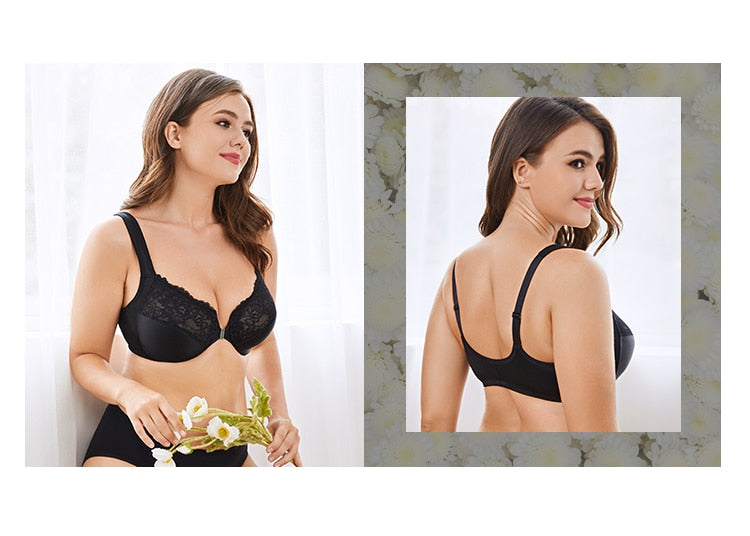When do breasts stop growing? And why they increase and decrease.

From the age of 12 to 65+ the numbers of changes make it hard to keep track of what bra size you really should be looking at. This is why it is so important to get your size checked often. This prompted us to look into it in more detail. Some of the interesting facts that I found were:
In Your 20s…
Tons of Changes
Your breast size can fluctuate for various reasons in this decade, according to Lisa Jacobs, M.D., associate professor of surgery at Johns Hopkins Medicine. First, you may be dropping the freshman 15, your metabolism may slow, or perhaps you’re otherwise settling into your adult weight. “The breasts will change in size as you gain or lose weight,” says Jacobs. Beyond that, there’s pregnancy. “In their 20s, many women get pregnant, so there’s the breast enlargement that happens with that weight gain and preparing for lactation,” she says. After the lactational changes, your breasts may seem either smaller or larger than they were before pregnancy. Pregnancy can also make your areolas darker and your nipples larger, though those both return to their pre-pregnancy states after delivery.
Common Lumps and Bumps
Fibrocystic change, which is a very common condition characterized by benign lumps in one or both breasts, often emerges when women are in their 20s, says Jacobs. Women at this age might be dealing with changes in their menstrual cycles, which means differences in hormones like estrogen. That can cause breasts to get swollen lumps, which are often totally normal. If you feel a lump that hurts but also feels a lot like another area in the same breast or the other one, that’s a sign it’s probably fibrocystic change rather than something worrisome (lumps associated with cancer usually aren’t painful, according to Jacobs). Still, be sure to check with your doctor if you notice any major changes.
In Your 30s…
Some Stretching
After having a few kids, the skin of your breasts can start to stretch because of the associated weight gain and loss. “That can lead to stretch marks or ptosis, which is a drooping of the breasts," says Jacobs. This is especially true if you’ve had to deal with significant weight changes during and after pregnancies, so don’t be alarmed if stretch marks appear, though they’re still more likely to show up on your stomach.
In Your 40s…
A Little Bit Softer Now
In your 40s, menopause leads to more breast changes as your ovaries start to produce less estrogen. At this point, your breasts go through what’s called involution, which is when the breast tissue is replaced by fat, which is softer, so they don’t feel as firm, says Jacobs. Involution doesn’t happen uniformly, so one part of the breast may get fatty, leaving the tissue next to it feeling like a lump in relation. If the lumps are soft, like the side of your nose, that’s not a red flag. If they’re a bit firmer like the bridge of your nose, they should be evaluated. Either way, doing frequent self-exams can help you notice any differences you might want to bring up to a doctor. “We encourage women to do them regularly so they can stay on top of how their breasts are changing,” says Jacobs.
Decrease in Density
Although you can experience ptosis after major weight loss or pregnancy, it’s more likely to come on naturally as you age. The elasticity of your breasts can decline because the sag-preventing collagen starts to give way. This is also when your breasts become less dense. That's one of the reasons why mammograms are advised after age 40, because doctors are able to see better due to reduced density, says Jacobs.
Source: https://www.womenshealthmag.com/health/a19916097/breasts-change-with-age/
But it prompted us to look at the issue, and ask the experts.
And we have discovered your boobs stop growing and changing much later than you may think.
In particular, regardless of their shape or size, breasts can dramatically change in your 20s and 30s.
Hormones, pregnancy and some health issues can cause your boobs to fluctuate in size, change colours, develop stretch marks and droop.
Here, Dr Sarah Jarvis, GP and clinical director of Patient.info, talks us through the 11 main ways your breasts can change during your 20s and 30s.
1. They may change in size
Many people think your boobs stop growing in your teens, but it turns out they can continue growing and changing size in your 20s and 30s.One of the main reasons is weight gain and weight loss - and of course this can happen at any time in your life.
Dr Jarvis said: "Your breasts are, in many respects, just like the rest of your body.
"You get bigger by putting on weight, they get bigger."
2. Your areola may get darker
It may sound strange but the area around your nipples can change colour.In particular, nipples become hyper-pigmented when a woman is pregnant.
The areola - the small circular area of coloured skin around the nipple - also stretches.
Dr Jarvis said: "During pregnancy, your nipples usually get bigger and the areolas at the edge of the nipple get darker.
"This may or may not disappear in time, but it’s perfectly normal either way."
A change in colour can also happen as women age, with nipples usually becoming darker.
But it is important to remember that any change in colour can be a sign of breast cancer, so be sure to keep up with your regular checks and mammograms.
3. They can get stretch marks
As your breast size changes — due to weight gain, weight loss, or pregnancy — you may notice little silvery or red lines starting to appear on your skin.These are stretch marks, and they can show up regardless of your age or skin colour.
Dr Jarvis said: "If you get stretch marks when you put on weight rapidly including during pregnancy, you may develop them on your breasts as well."
4. One may get larger than the other
Many women often worry when they notice one of their boobs is bigger than the other - but this is perfectly normal. The causes are numerous, from misaligned posture, to hormones, to pregnancy. Dr Jarvis said: "Just like your hands and feet, it’s perfectly normal to have one bigger than the other."5. You may find lumps and bumps
Lumps and bumps can be totally normal but if you spot any it is really important to get it checked with your GP.A lump is one of the most common signs of breast cancer - and while in many cases it won't be that serious, it's better to be safe.
In lots of cases it will be a cyst, especially if you're younger - and hormones can also cause lumps and bumps.
6. They'll be less full after pregnancy
Your 20s and 30s are obviously the prime time when it comes to having babies, so changes brought on by pregnancy are worth noting.Of course you can expect to gain weight during pregnancy, and this will mean fuller breasts.
You also may have lactation and breastfeeding to contend with, which can also affect the size of your boobs.
But once that's all over and done with, you may notice that things don't necessarily go back to normal.
Sioned Hilton, of breast pump makers Medela UK, previously told The Sun: “If you’re pregnant or give birth at this time, your breasts will fluctuate in size and that’s perfectly normal.
“Wearing well-fitted lingerie will help your breasts shrink to their original size."
7. Your nipples may protrude
Many women find their nipples get larger as well as darker following pregnancy - and these changes can end up being permanent.If you're used to your nipples looking a certain way this can be disconcerting but it's nothing to worry about.
8. They may start to droop
Yes, "drooping" may sound a little depressing, so let's say your boobs will start to "settle" in your 20s and 30s.
Dr Jarvis said: "Our skin gradually becomes less elastic with age, which can contribute to less firm, droopier breasts."
Your genetics will also have a big impact on whether your boobs droop - so if your mum's did this early on, then your pair may do the same.
9. They may be worse for wear after exercise
At some point it happens to us all - and life's health kicks can have an impact on your boobs.In particular, some experts say that back-and-forth repetitive motions that happen when you run or do a similar workout can lead to a breakdown of breast collagen.
In order to avoid your boobs drooping or feeling worse for wear it's important to invest in a good sports bra.
10. Your period may make them bigger
It's not just your periods that are regulated by hormones. Monthly changes will also lead to changes in your boobs.Dr Jarvis said: "Breast tissue is very sensitive to hormone changes, so there are some changes which they hold the exclusive rights too.
"For instance, they tend to get bigger and more lumpy towards your period, as you body’s levels of the hormone progesterone rise.
"The same things applies – for some women – if you take hormonal contraception."
11. They become something to look after
The moment you get boobs, they become something to look after.Women should especially be giving their boobs a check for lumps, bumps, and the other signs of cancer as soon as they hit their 20s.
Breast cancer often causes changes in the breast, including an alteration in the shape or size in both or one of your breasts.
Sometimes there may be a lump which feels thicker or harder than the rest of the tissue.
Source: https://www.thesun.co.uk/fabulous/10157925/when-do-your-boobs-stop-growing/



